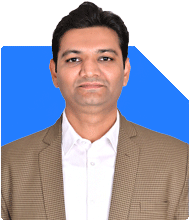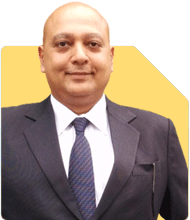Should I invest in my son's education or building a house with a lumpsum of 12 lakhs?
Ramalingam Kalirajan |8291 Answers |Ask -Follow
Mutual Funds, Financial Planning Expert - Answered on Mar 24, 2025
He has an MBA in finance from the University of Madras and is a certified financial planner.
He is the director and chief financial planner at Holistic Investment, a Chennai-based firm that offers financial planning and wealth management advice.... more
Sir I have to lumpsum 12 lac Goal - son education 15 yr time House buildup - 10yr Long time frame please suggest some
Son’s Education (15 years) – Requires steady growth with moderate risk.
House Construction (10 years) – Needs capital appreciation with stability.
A structured portfolio ensures both goals are achieved.
Asset Allocation Strategy
1. Growth-Oriented for Education (15 Years)
A long investment horizon allows more equity exposure.
Diversified equity funds help in wealth creation.
Mid and small-cap funds add higher returns over time.
A minor portion in hybrid funds ensures stability.
2. Balanced Growth for House Construction (10 Years)
A mix of equity and debt is needed for stability.
Large-cap and flexi-cap funds reduce risk.
Hybrid funds provide steady growth with low volatility.
Systematic withdrawal can be planned closer to the goal.
Importance of Regular Funds Over Direct Funds
Professional Guidance – A Certified Financial Planner ensures better fund selection.
Risk Management – Regular monitoring helps in timely portfolio adjustments.
No Emotional Decisions – Direct fund investors may panic in market downturns.
Long-Term Benefits – A well-managed portfolio generates higher returns.
Tax Considerations for Withdrawals
Equity Mutual Funds – LTCG above Rs. 1.25 lakh is taxed at 12.5%. STCG is taxed at 20%.
Debt Mutual Funds – Gains are taxed as per income tax slab.
Withdrawal Strategy – A phased withdrawal plan reduces tax burden.
Final Insights
Invest based on time horizon and risk tolerance.
Use diversified funds for stable long-term growth.
Avoid direct funds. Investing through an MFD with a Certified Financial Planner gives better results.
Periodic review ensures alignment with goals.
Withdraw systematically to reduce tax impact.
Best Regards,
K. Ramalingam, MBA, CFP,
Chief Financial Planner,
www.holisticinvestment.in
https://www.youtube.com/@HolisticInvestment
You may like to see similar questions and answers below
Sanjeev Govila |458 Answers |Ask -Follow
Financial Planner - Answered on Feb 06, 2024
Ramalingam Kalirajan |8291 Answers |Ask -Follow
Mutual Funds, Financial Planning Expert - Answered on Apr 27, 2024
Ramalingam Kalirajan |8291 Answers |Ask -Follow
Mutual Funds, Financial Planning Expert - Answered on May 14, 2024
Ramalingam Kalirajan |8291 Answers |Ask -Follow
Mutual Funds, Financial Planning Expert - Answered on May 27, 2024
Dr Dipankar Dutta |1165 Answers |Ask -Follow
Tech Careers and Skill Development Expert - Answered on Apr 24, 2025
Dr Dipankar Dutta |1165 Answers |Ask -Follow
Tech Careers and Skill Development Expert - Answered on Apr 24, 2025
Dr Dipankar Dutta |1165 Answers |Ask -Follow
Tech Careers and Skill Development Expert - Answered on Apr 24, 2025
Dr Dipankar Dutta |1165 Answers |Ask -Follow
Tech Careers and Skill Development Expert - Answered on Apr 24, 2025
Vipul Bhavsar |58 Answers |Ask -Follow
Tax Expert - Answered on Apr 24, 2025
Radheshyam Zanwar |1564 Answers |Ask -Follow
MHT-CET, IIT-JEE, NEET-UG Expert - Answered on Apr 24, 2025
Radheshyam Zanwar |1564 Answers |Ask -Follow
MHT-CET, IIT-JEE, NEET-UG Expert - Answered on Apr 24, 2025
Sushil Sukhwani |594 Answers |Ask -Follow
Study Abroad Expert - Answered on Apr 24, 2025
Sushil Sukhwani |594 Answers |Ask -Follow
Study Abroad Expert - Answered on Apr 24, 2025
Sushil Sukhwani |594 Answers |Ask -Follow
Study Abroad Expert - Answered on Apr 24, 2025





















